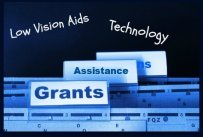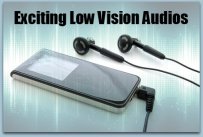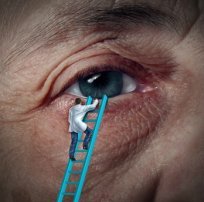Diabetic Eye Disease
Diabetic eye disease can strike at any time and without warning. But, it is important that patients with diabetic eye disease realize that they aren’t without options once they are diagnosed.
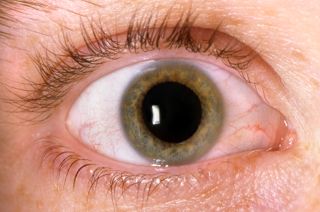
What is Diabetic Eye Disease?
e of condition is a term that encompasses multiple eye issues a person with diabetes might encounter. It can result in low vision or, in extreme cases, blindness. Some conditions associated with diabetic eye disease include:
- Retinopathy – This causes damage to the blood vessels in the retina.
- Cataract – This creates clouding inside the eye — making vision unclear.
- Glaucoma – As fluid builds up behind the eye, increased pressure from that fluid can damage the optic nerve and cause the patient to lose their vision or suffer from permanent low vision.
Most diabetic eye disease can be caught early on with routine eye exams and follow-ups with your practitioner. For some patients, when these eye diseases are caught early enough, the patient can avoid complete blindness. But, the low vision is often permanent.
Technology is Available for Those with Diabetic Eye Disease
If you suffer from low vision because of a diabetic eye disease or condition, there are two forms of technology that can help you still function in your everyday life:
- General Technology – This includes items like smartphones, tablets, computers and even phones.
- Assistive Technology – These are items specifically designed to help those with low vision, such as screen readers, braille printers, screen magnifiers, etc.
How Apps Can Help People With Low Vision
If you or a loved one has low vision because of a diabetic eye disorder, you aren’t without options. In fact, more and more apps are becoming available for those with low vision to help them see better, write and even watch television. Some apps to look for if you have diabetic eye disease include:
Screen Magnifiers
These apps use the camera on your smartphone to enlarge print — whether from a book, piece of mail or even the computer screen. The text is bigger and clearer so you don’t have to squint.
Color Identifiers
These unique apps help those that have lost the ability to see colors because of their low vision or diabetic eye disease. They use the smartphone’s built-in camera to scan colors and reference their database. This is especially helpful if you’re picking out clothes for the day or trying to find something in a specific color. Colorvisor is one of the most detailed color recognition apps. Buy Colorvisor here.
Diabetic Retinopathy
This condition comes about when your retina's blood vessels are damaged. For adults in the United States, it's the leading cause of blindness.
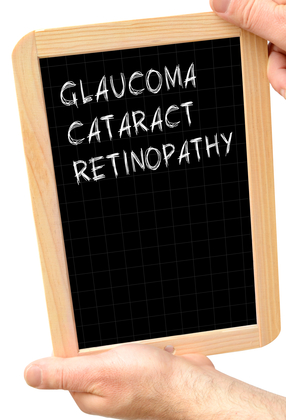
Remember that the retina is located at the back of the eye and is a vital light-sensitive tissue.
Some folks suffering from diabetic retinopathy experience brand new blood vessel growth on the retina's surface, while others experience a swelling of the blood vessels that eventually leaks blood and fluid.
While it's rare in children it's still wise to have your child checked after the age of 10 as tests can check for other types of childhood eye diseases, too.
There are 4 stages associated with diabetic retinopathy:
- Mild Nonproliferative Retinopathy
- Moderate Nonproliferative Retinopathy
- Severe Nonproliferative Retinopathy
- Proliferative Retinopathy
Symptoms & Treatment of Diabetic Retinopathy
Normally, there aren't any early warning signs in terms of loss of vision or pain. That's why you should have an annual dilated eye exam.
In time, you may experience macular edema, which is when the macula (responsible for sharp central vision) begins to swell from leaking blood and fluid inside the retina. When this happens, the first symptom is usually blurred vision.
As a preventative measure, the best thing you can do is monitor closely your blood pressure, blood cholesterol and blood sugar.
If you advance to the fourth and most progressive stage, proliferative retinopathy, then scatter laser surgery is usually used to help reduce the size of the abnormal blood vessels.
It's very important to begin this treatment before any bleeding or leakage from the newer blood vessel growth.
After bleeding, then a vitrectomy becomes necessary, which is a procedure used to remove blood from the center of the eye.
Glaucoma
Glaucoma is a diabetic eye disease where vision loss or outright blindness can occur as a result of optic nerve damage.
Damage to your optic nerve can happen when fluid that normally passes through the anterior chamber of the eye slows down and a build up causes too much pressure. High blood pressure is a risk factor.
Low-tension glaucoma (also known as normal-tension) can happen without an increase in eye pressure.
Glaucoma Symptoms/Treatments
Just like diabetic retinopathy, there’s no pain or visual symptoms at the onset of glaucoma. However, over time a loss of peripheral vision occurs.
Later, central vision (straight ahead view) may be lost so significantly that it causes blindness.
While there’s no cure for glaucoma, treatments do include laser trabeculoplasty, medicines, and conventional surgery.
Diabetic Eye Disease: Cataract
This is a clouding of your lens and is most often caused through the aging process. Light normally passes through the lens (clear part of the eye) to the retina, where light is interpreted as images by signals sent to your brain.
Once your lens is cloudy, your vision become blurry.
Common Cataract Symptoms/Treatment
Symptoms include:
- Faded colors
- Blurry vision
- Night vision is reduced
- Double vision
- Halo around lights, as well as glare issues from the sun, lamps, or headlights
For treatment, better lighting, new glasses, magnifying lenses, or anti-glare sunglasses can help in the early stages.
Surgery is eventually needed if normal activities, such as reading, writing, watching television, or driving are affected.
There’s no question that low vision caused by diabetic eye disease makes life difficult. Not only are you affected physically, but mentally and emotionally as well as you work to understand how to function in a new way.
I, too, have lived with low vision for over 25 years and am excited to let you know about the many new technologies available that can make your life so much easier and fun going forward.
If you’d like all the details on how you can use new technology to help any form of diabetic eye disease, I invite you to fill out the form below…
Get Exciting Low Vision Technological Secrets Sent To You...
Low Vision > Diabetic Eye Disease









